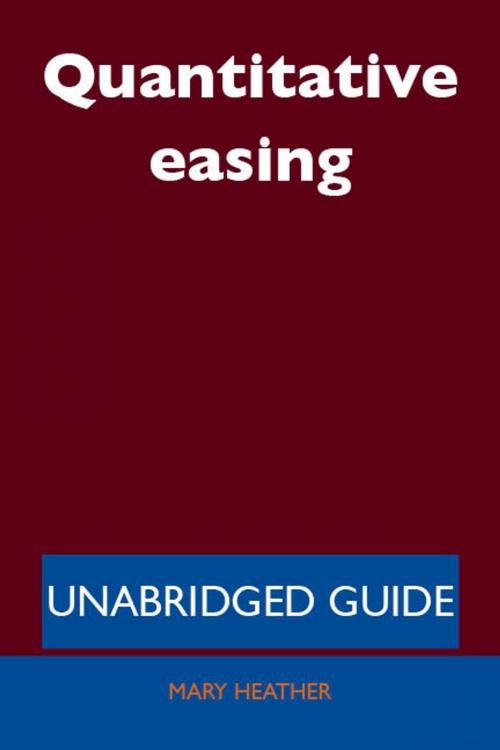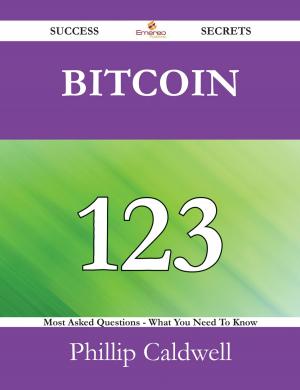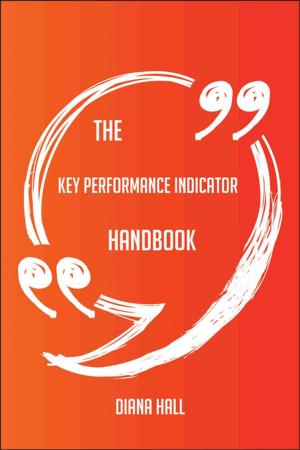| Author: | Mary Heather | ISBN: | 9781486429516 |
| Publisher: | Emereo Publishing | Publication: | October 24, 2012 |
| Imprint: | Emereo Publishing | Language: | English |
| Author: | Mary Heather |
| ISBN: | 9781486429516 |
| Publisher: | Emereo Publishing |
| Publication: | October 24, 2012 |
| Imprint: | Emereo Publishing |
| Language: | English |
Here's part of the content - you would like to know it all? Delve into this book today!..... : Quantitative easing may then be used by the monetary authorities to further stimulate the economy by purchasing assets of longer maturity than only short-term government bonds, and thereby lowering longer-term interest rates further out on the yield curve.
... On the other hand, in economies when the monetary demand is highly elastic with respect to interest rates, or interest rates are close to zero (symptoms which imply a liquidity trap), quantitative easing can be implemented in order to further boost monetary supply, and assuming that the economy is well below potential (inside the production possibilities frontier), the inflationary effect would not be present at all, or in a much smaller proportion.
...With QE, the newly created money is used for buying government bonds or other financial assets, whereas the term printing money usually implies that the newly minted money is used to directly finance government deficits or pay off government debt (also known as monetizing the government debt).
...We know that once a central bank is perceived as targeting government debt yields at a time of persistent budget deficits, concern about debt monetization quickly arises. and later in the same speech states that the Fed is monetizing the government debt, The math of this new exercise is readily transparent: The Federal Reserve will buy $110 billion a month in Treasuries, an amount that, annualized, represents the projected deficit of the federal government for next year.
There is absolutely nothing that isn't thoroughly covered in the book. It is straightforward, and does an excellent job of explaining all about Quantitative easing in key topics and material. There is no reason to invest in any other materials to learn about Quantitative easing. You'll understand it all.
Inside the Guide: Quantitative easing, Monetary Policy Committee, Liquidity trap, Keynesian endpoint, Government debt, Gilt-edged securities, Federal Reserve responses to the subprime crisis, Excess reserves, Economic history of Japan, Deflation, Deficit spending, Bank of England, Balance of trade
Here's part of the content - you would like to know it all? Delve into this book today!..... : Quantitative easing may then be used by the monetary authorities to further stimulate the economy by purchasing assets of longer maturity than only short-term government bonds, and thereby lowering longer-term interest rates further out on the yield curve.
... On the other hand, in economies when the monetary demand is highly elastic with respect to interest rates, or interest rates are close to zero (symptoms which imply a liquidity trap), quantitative easing can be implemented in order to further boost monetary supply, and assuming that the economy is well below potential (inside the production possibilities frontier), the inflationary effect would not be present at all, or in a much smaller proportion.
...With QE, the newly created money is used for buying government bonds or other financial assets, whereas the term printing money usually implies that the newly minted money is used to directly finance government deficits or pay off government debt (also known as monetizing the government debt).
...We know that once a central bank is perceived as targeting government debt yields at a time of persistent budget deficits, concern about debt monetization quickly arises. and later in the same speech states that the Fed is monetizing the government debt, The math of this new exercise is readily transparent: The Federal Reserve will buy $110 billion a month in Treasuries, an amount that, annualized, represents the projected deficit of the federal government for next year.
There is absolutely nothing that isn't thoroughly covered in the book. It is straightforward, and does an excellent job of explaining all about Quantitative easing in key topics and material. There is no reason to invest in any other materials to learn about Quantitative easing. You'll understand it all.
Inside the Guide: Quantitative easing, Monetary Policy Committee, Liquidity trap, Keynesian endpoint, Government debt, Gilt-edged securities, Federal Reserve responses to the subprime crisis, Excess reserves, Economic history of Japan, Deflation, Deficit spending, Bank of England, Balance of trade















